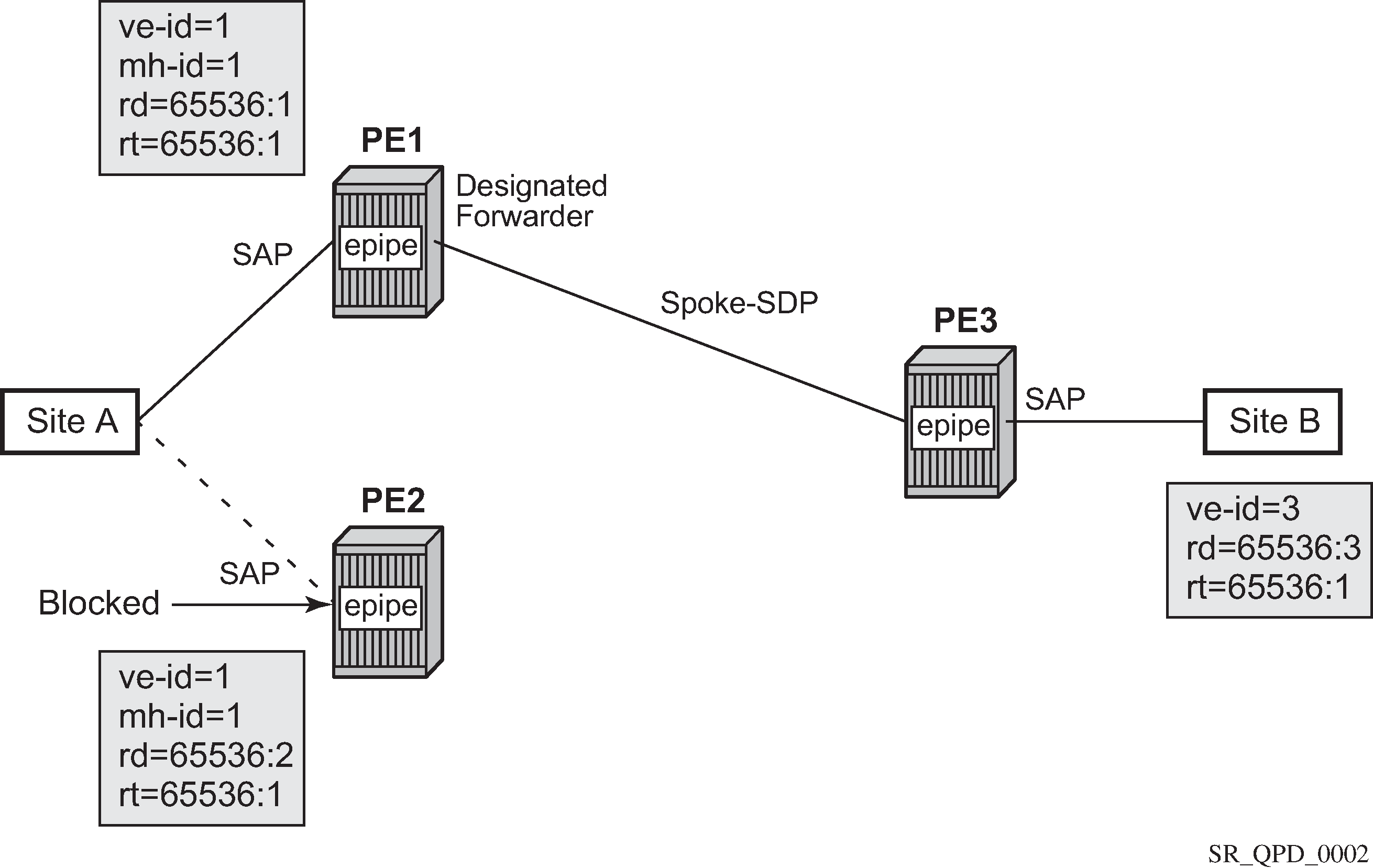A pseudowire is established between the designated forwarder of the dual-homed PEs and the remote PE. If a failure causes a change in the designated forwarder, the pseudowire is deleted and reestablished between the remote PE and the new designated forwarder. This topology requires that the VE IDs on the dual-homed PEs are set to the same value.
A dual-homed, single pseudowire topology example is shown in Figure 1.

An Epipe with BGP VPWS enabled is configured on each PE. Site A is dual-homed to PE1 and PE2 with the remote PE (PE3) connecting to site B. An Epipe service is configured on each PE in which there is a SAP connecting to the local site.
The pair of dual-homed PEs perform a designated forwarder election, which is influenced by BGP route selection, the site state, and by configuring the site-preference. A site is only eligible to be the designated forwarder if it is up (the site state is down if there is no pseudowire established or if the pseudowire is in an operationally down state). The winner, for example PE1, becomes the active switch for traffic sent to and from site A, while the loser blocks its connection to site A.
Pseudowires are signaled using BGP from PE1 and PE2 to PE3, but only from PE3 to the designated forwarder in the opposite direction (so only one bidirectional pseudowire is established). There is no pseudowire between PE1 and PE2; this is achieved by configuration.
Traffic is sent and received traffic on the pseudowire connected between PE3 and the designated forwarder, PE1.
If the site state is operationally down, both the D and Circuit Status Vector (CSV) bits (see the following for more details) are set in the BGP-VPWS update which causes the remote PE to use the pseudowire to the new designated forwarder.